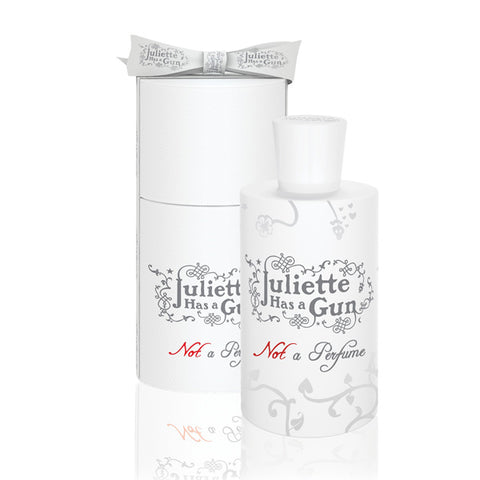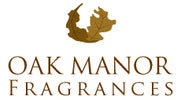What is Cetalox? Juliette Has a Gun Not a Perfume Review

A Perfume That Isn't Quite a Perfume
After receiving our first bottle of Juliette Has a Gun’s Not a Perfume, I was intrigued at the lack of ingredients, and the inclusion of just one critical component: Cetalox, or sometimes called Ambroxan(although there are subtle differences, mostly to do with who the manufacturer is). I had heard the term thrown around before in reference to the base notes of many common perfumes, but began to wonder: What is Cetalox? What is Ambroxan? And how can a perfume be Not a Perfume?
Cetalox: A Synthetic Form
With a little antiquated book research, and some Internet sleuthing, I discovered that Ambroxan/Cetalox is indeed a very common base note in the world of personal fragrances. Most importantly, I discovered that both of these substances are essentially in the same category of things: synthetic forms of ambergris. Both are long-lasting components that have a naturally woody smell, with tones of musky amber. It is a gentle and underwhelming fragrance, which is the reason that it is commonly used as a scent foundation in many perfumes. Ambroxan was first used in the 1950’s in lieu of gray ambergris due to the costly nature of the substance, and today Cetalox, or Ambroxan is now commonly used as a synthetic replacement to ambergris, which was formerly a major component of modern perfumes and colognes. Ambergris translates to “gray amber” from French, and refers largely to the way it looks in its raw form. It appears as lumpy gray rocks, or even coal-like chunks. Although, there are still a large number of fragrances that still use naturally occurring ambergris in their perfume applications. Ambroxan has also been known as Orcanox previously, and is an interchangeable term.
What Exactly is Ambergris?
As I ventured down this informational rabbit hole, I decided to look into what exactly ambergris is, and why it was so commonly found in personal fragrances of the past, and the occasional present day. Ambergris is actually a waxy and flammable substance that is produced in the digestive tract of sperm whales. It is regurgitated by the whale, and floats to the top of the water, and can even wash up on the shore. The substance develops a sweet, woody odor as it ages, and its longevity of scent made it ideal for fragrance use. It is a subtle, naturally earthy scent, creating a nice base to be added on, and is soluble in ethanol. In the event that you’re curious, ambergris is very rarely harvested directly from the digestive tract of sperm whales, but can be harvested from the secretion as it floats in certain coastal areas. In fact, the substance can have a price tag as hefty as the whales it was secreted from. A recent example had a 2.4 pound chunk of ambergris selling for almost $20,000 USD in France (the link also has a video demonstrating what raw ambergris looks like). The reason for the synthetic form became quite clear: it was more economically and ecologically sound. As sperm whales are now an endangered species, strict guidelines are enforced in how ambergris can be collected.
How is Cetalox used in Not a Perfume?
Cetalox in its pure form is a crystalline substance, and is always used with some sort of dissolvent in personal fragrances to achieve liquid form. This had me curious as to what the solving agent in Not a Perfume was, and it didn’t take long to discover that it was simply an addition of ethanol. Cetalox is used widely in laundery detergents due to its lasting ability and clean, crisp smell. One of the initial reactions that my husband and I both had in reaction to Not a Perfume was the sheer cleanliness of the smell, almost to a clinical degree. It certainly induced a bit of familiarity with clothes drying in the sunshine, but only for the first few moments of the initial scent.
The Benefits: Or Why Allergen Free is Important
In addition, Cetalox or Ambroxan is hypoallergenic, meaning that is significantly lower risk of causing an allergic reaction as opposed to most chemicals. Juliette Has a Gun’s not a perfume does not contain any other allergens or phthalates, and maintains that it is completely allergen free. This means that it can be used on people that would generally shy away from other perfumes or personal fragrances like eau de toilettes or eau de parfums that might have allergenics, phthalates, or other chemicals that could react adversely with one’s own body chemistry. Phthalates are usually chemicals used to strengthen plastic, but improve its elasticity, but these chemicals are also often used as dissolving agents in perfumes or fragrance-based skincare products or lotions. These chemicals can also be used to help lotions or skincare agents get deeper into the skin to achieve that smooth, glossy feel. As a general rule, it seems that the less chemicals you are putting on your skin, the better. Phthalates have been studied, but loosely, and rarely in humans. The evidence from animal studies and basic human studies have shown some indications that they may have impacts on birth defects and development. Although the results of such studies are still being debated, for argument’s sake, I think it’s safe to assess the fact that Juliette Has a Gun’s Not a Perfume’s lack of phthalates or allergens as a good thing.
In addition, Not a Perfume seems to be a scarce comparison to most personal fragrances today. It is composed of only two substances: Cetalox and ethanol. The ethanol is used as a dissolving agent for the Cetalox, and helps lighten the fragrance for a more feminine flare. The simplicity of the perfume makes labeling a breeze, and in today’s atmosphere of “read the fine print”, a refreshing addition to the world of fragrance. This is the reason that you typically see “Fragrance” as an ingredient in many perfumes or scented skincare or lotion products. “Fragrance” is used as a catch-all term for what usually amounts to a complex proprietary blend of chemicals that you and I have likely never heard of. Is this a bad thing? Not necessarily. Unless those propriety ingredients consist of phthalates, allergenics, or parabens (in the case of lotions and skincare solutions), in which case you may rest easier knowing that you aren’t putting those substances directly onto your body.
How Not a Perfume Came to Be
In 2008, a similarly produced non-perfume Escentric Molecules Molecule 02 by Geza Schoen had used Ambroxan to demonstrate the natural gift of imitating ambergris in a single component personal fragrance.
Romano Ricci, the founder of Juliette Has a Gun, created Not a Perfume in 2010 on the basis of a minimalist approach to fragrance, taking one of his favorite bases and bringing it solely to the forefront. The result, as quoted from Ricci himself is, “minalimst, elegant, pure”. Due to the synthetic nature of the Cetalox, this pure scent may indeed last even longer than its natural counterpart in ambergris. The result is a feminine, but slightly musky scent that is long lasting. The fragrance has the typical ebb and flow of many perfumes, without the complexity of layering many substances. Like all personal fragrances (which may be a better descriptive term for this product anyway as opposed to perfume), Not a Perfume blends with your own chemical makeup for a unique and individual scent. Juliette Has a Gun derives its name from the work of Shakespeare, but with a modern sense of empowerment. Sophisticated, but sassy.
Should I Try a Non-Perfume?
The rule of thumb with any personal fragrance is to find one that works specifically for you, and the reaction it has with your body, regardless of the ingredients, as long as you are comfortable putting it on your body. Many people have no issues with allergenics, but for those that do, Not a Perfume seems like an excellent choice. At the very least Cetalox or Ambroxan seems to beat putting something derived from the digestive tract of a whale on your skin. Just because the ancient Egyptians were carrying around burning ambergris thousands of years ago, doesn’t mean that we should still be doing it today.
